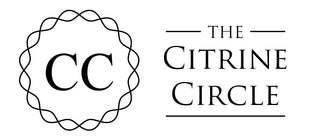Cantera Opals have been more and more commonly faked in recent years, and with gem show season just around the corner, we'll definitely be seeing more of these. But how do you spot a fake or manmade Cantera Opal?
Cantera Opals are a type of Opal that are found mainly in the Magdelina and Queretaro regions of Mexico. The name 'cantera' translates to 'quarry', as Rhyolite quarries in these areas produce beautiful Opal that has formed within the bubbles or vesicles of lava as it slowly cooled. Cantera Opals can contain precious opal (those that have a play of colour / rainbow flashes, such as Ethiopian Opal), or common opal (opal that does not have a play of colour / rainbow flash). Cantera Opals are also often referred to simply as 'Fire Opal' as traditionally the centre opal will be a Fire Opal (orange to red in colour).
Cantera Opal imitations were initially made by taking loose pieces of Mexican Opal, and embedding them into a clay/putty with similar colours to Mexican Rhyolite in which they are naturally found. More recently, we've also seen imitations that are created by taking cheaper Opal fragments, such as Ethiopian Opal, and pushing them into the same putty matrix and then polishing them into cabs. You will not see "rough" pieces of the manmade creations, as a lump of squidy putty or clay is much easier to spot than a polished cabochon!
The created ones are easiest to spot by the hard edges where the embedded Opal chunk meets the putty, as the natural ones will have a much more organic edging, as the Opal infills the existing bubble in the Rhyolite. Firstly below there are a couple of photos of the natural Cantera Opals taken from Google:
Notice how they have uneven edges, often multiple smaller sectionsin the same piece of Rhyolite? They also are often uneven shapes, as they are polished to maximise the Opal within the matrix, which won't usually be a nice neat, even shape. Next, below we have a couple of images of the fake 'created' Cantera Opals


Notice on these pieces how the edges are much harder than on the natural pieces? As they have started using Ethiopian Opals as well, the colours are also starting to appear different - rather than the usual clear / orange / red colour of most Mexican Fire Opal, which are typically found in natural Cantera, these Ethiopian Opals will sometimes have a more blue base colour, like the one above. Ethiopian Opals are also sometimes smoked to give them a black base colour (you can find natural black Ethiopian Opal, but it is mucb rarer and would be unlikely to use for these), and as they are so porous, water based dyes have also been used to colour them and we've since seen the rise of 'galaxy' opals in crazy unnatural shades of pinks and purples. These colourful ones are also often referred to as 'galaxy opal' A particularly obnoxious example of this can be seen below:

Another creation to beware of are the Fire Opal 'eggs' that are put together in the same way, many small sections of Opal embedded into putty or similar, and then polished into an egg shape, an example is shown below, image taken from Google:
Although man made creations sold as natural are extremely frustrating, it's important to remember that for the most part, the Opals are that being used to create these "fake" Cantera Opal and Fire Opal cabs and carvings are still actual Opal, so it's not a fake crystal, just a manmade assembly of them. Although, now more of the Opals used are being dyed and treated, it's probably just a matter of time before Opalite and other coloured glass or cheaper stones are used in place of real Opal, so keep an eye out for this too!
In summary, natural Cantera Opals are found and polished in Mexico, and the Opal will generally vary in base colour from clear, to shades of yellow, orange and red, and may or may not have play of colour. Natural Cantera Opals will have soft, natural edging where the Opal has infilled a natural "hole" in the Rhyolite, not a hard edge where a chunk has been pressed into some putty.







